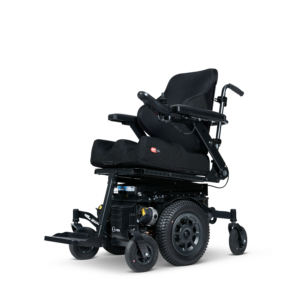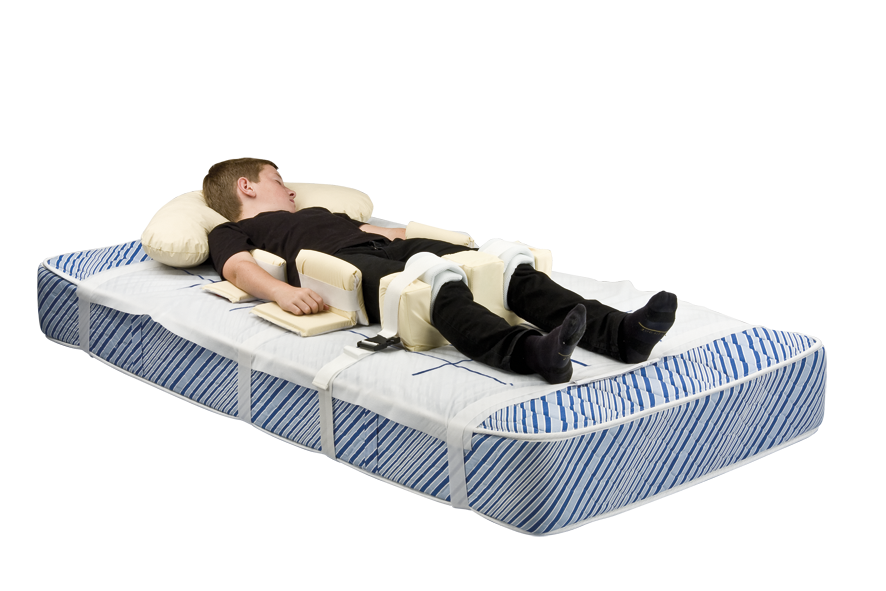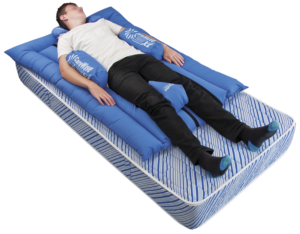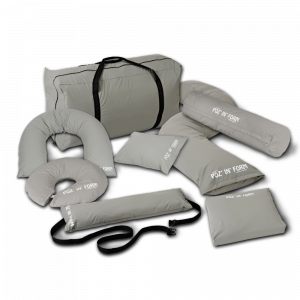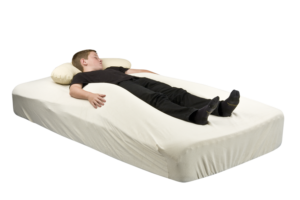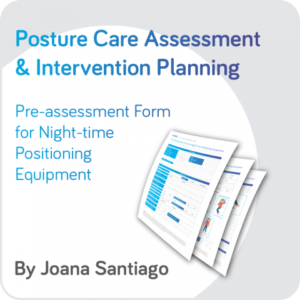 position. Wrong postures combined with the force of gravity impacts the body shape negatively and can be linked with the development of contractures, reduced range of motion, problems with spasticity/muscle tone, pain, poor physiological functioning, decrease of functional ability, and many other issues.
position. Wrong postures combined with the force of gravity impacts the body shape negatively and can be linked with the development of contractures, reduced range of motion, problems with spasticity/muscle tone, pain, poor physiological functioning, decrease of functional ability, and many other issues.It is well known that early identification and early intervention are key to addressing body shape changes. Improving the way people rest and lie in bed, particularly those with movement disorders, may have several benefits which include: minimised postural deformity, improved postural stability, increased functional ability, improved physiological functioning, decreased pain, increased comfort, among many other benefits.
Successful posture care management interventions require a careful understanding of the user, and their individual needs and goals. Within the clinical context, the primary goal of assessment is to determine those characteristics of the client and his or her life situation that may influence treatment decisions and contribute to the success of treatment.
In the field of wheelchair seating and positioning we have been amply using assessment forms to not only collect crucial information of the client, their needs, goals and expectations, but also to support with the clinical reasoning, the intervention plan as well as the funding process. However, in the field of Posture Care Management and particularly for Night-time positioning interventions, there are not many assessment forms that follow the same model.
I am very privileged to work with therapists in the field, supporting them with training and joint assessments. It was following one of those sessions that I was challenged to put a type of form together to assist with the data collection and product trial planning. The challenge was accepted!
The (Pre-)Assessment form for Night-time positioning was created to assist therapists and local distributors with the decision-making process behind the selection of equipment to prescribe or use during a trial session. It does not replace a thorough clinical assessment, nor does it contain all the potential risk factors associated with this kind of intervention. We recommend using it at your own discretion.
Do you think it may be helpful for your clinical practice? We would love to hear your feedback!

